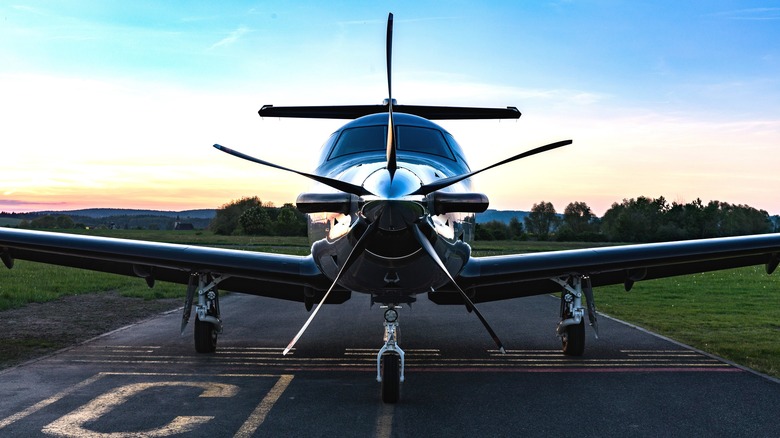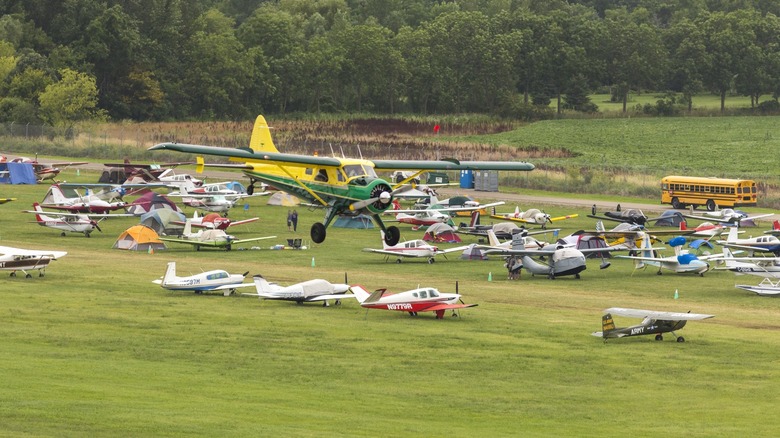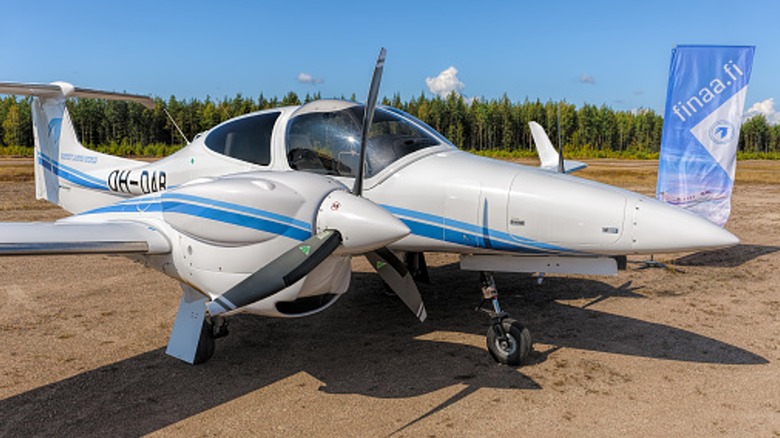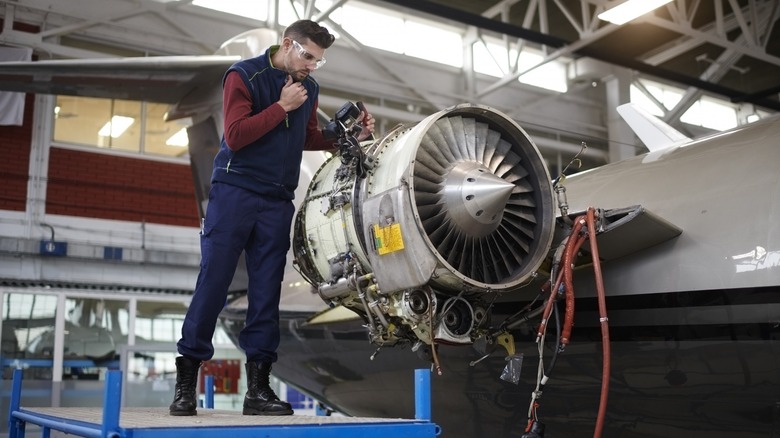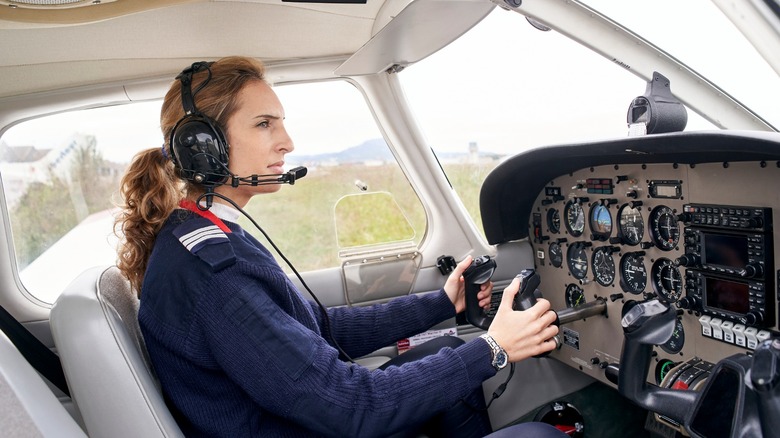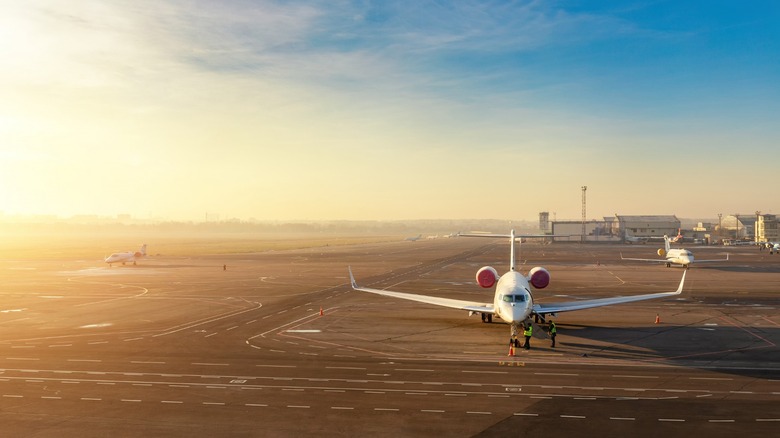5 Things To Consider If You Want To Buy A Plane
Perhaps you've seen your friends, relatives, or peers get their own private plane. Or maybe you've just caught a glimpse of one soaring through the sky and dreamed about owning your own flying machine. And now that you've thought about it, you realize you can afford one too. So, you research by looking at plane listings and even calling a couple of plane brokers.
However, buying an aircraft isn't like walking into a car dealer, taking out a loan (or paying for it in cash), and driving it off the lot. Aside from the initial purchase price, you must consider many other things — all of which will cost you. You must know which plane you're comfortable flying, what your purpose is for buying the plane, the available airports near your home, and many other pertinent details. So, before going out and forking over your hard-earned money to a plane dealer or seller, ask yourself and answer these five crucial questions.
Which type of plane should you buy?
Many often think of small jets when they hear "private plane," but there are actually many different options available to would-be aircraft owners. In fact, many pilot-owners start with one of the most popular single-engine planes – like the Cessna 172 or the Piper PA-28 Cherokee — before eventually graduating to a faster and more powerful model, like the Piper M700 Fury.
So you should consider what you're buying a plane for and where you intend to fly it. If you're buying a plane just for yourself, your partner, and your family, and you only want to fly to nearby destinations for recreation, maybe a four-seater piston-engine aircraft would fit your needs. You can also consider a popular light jet like the Embraer Phenom 300E if you frequently fly between states for business and bring some of your staff along with you.
But if you conduct business on both coasts and frequently need to visit your offices, a mid-size private jet should get you from Los Angeles to New York in one hop without waiting for a scheduled flight on Southwest or United. But if you have interests across continents, you'd probably need a long-range jet like Kim Kardashian's Gulfstream or Taylor Swift's Dassault Falcon.
Purchase price
Once you've decided on the type of plane you're getting, it's time to look at your bank account. Can you afford to get a brand-new plane? Or do you need to settle for a used one? The price difference can vary greatly, depending on the age and condition of an aircraft.
For example, a factory-fresh Cessna 172 can cost you $400,000, while a used one would vary from $40,000 to $300,000, depending on its age, equipment, and engine time. Furthermore, if you don't want to fly a plane with gauges and dials, you must shell out extra for the latest avionics and a full glass display, which starts at $25,000 and could go higher depending on the features you want installed.
You must also consider the plane's age if you plan to take out a loan instead of paying for the aircraft in cash. That's because most banks will only let you borrow money if the plane's current age plus the loan term does not exceed 20 years. So, if you buy a 15-year-old plane today, you can only loan it for a maximum of five years. And the bank probably wouldn't give you a loan for a 20-year-old aircraft or older unless you have a special relationship with the institution.
Maintenance and operational costs
Like any vehicle, airplanes need maintenance, and they cost money to operate. Furthermore, you can't do DIY aircraft maintenance unless you're a licensed aircraft mechanic and own a licensed aircraft maintenance shop. Aviation maintenance is highly regulated for safety reasons.
As a result, small planes like the Cessna 152 would cost you $50 to $60 in maintenance costs per flight hour, as you must change or top up your engine oil, replace tires, and even occasionally wash your aircraft. Planes that are often used must also undergo 100-hour inspections, ensuring they're safe to fly. Aside from that, your engine must also undergo overhaul every 1,800 to 2,000 hours to ensure that everything is in tip-top shape and you don't lose it in flight.
Additionally, you must cover your operational costs, such as the fuel you burn during your flight and landing fees, which vary per airport, as well as the costs of any additional services you might need. We also recommend having a little extra squared away for unexpected expenses, like propeller changes, airframe overhauls, and avionics replacements, especially if you're buying a used aircraft without warranties.
Insurance and other annual costs
Aside from the direct and variable costs, you must consider your fixed expenses when owning a plane. These include — but are not limited to — insurance, registration, annual inspections, hangar fees, and taxes. Whether you fly your aircraft daily or let it sit in the hangar all year long, you must cover all these.
When you own your own plane, you must also consider your licensing or personnel costs. While private pilot's licenses don't expire, you must undergo a flight review every two years, renew your medical license every two to five years (if you're a private pilot and depending on your age), and be current — that is, have done three takeoffs and landings in the past 90 days — to carry passengers.
And if you don't have the time or can't spare the effort to get or maintain a license, especially if you have a larger jet (which requires more training), you must get a crew to fly you around. While a single pilot can operate many smaller jets, turboprops, and propeller airplanes, you'd need two or more pilots if you have a bigger plane. Corporate pilots could set you back between $85,000 annually for smaller and older jets to $200,000 for flying long-distance jets across the globe.
Airport availability
Aside from the costs, you must consider the availability of airports to park your plane. If you have a small, four-seat, single-engine plane, you can park it in almost any nearby airport. But if you have a larger plane like a turboprop or a twin jet, you need an airport with a longer runway.
That's because all planes have a minimum landing and takeoff distance. This number is the minimum runway length you need for the airplane to depart or arrive safely. If the airports near your home or office cannot accommodate your chosen plane, you'll have to travel by land further to find a suitable runway (unless you have a helicopter, which is an altogether different story).
Owning a plane is an exciting journey, especially if you're an aviation enthusiast about to purchase your first one. But just like owning a car, you must consider many things before getting an aircraft. By knowing these things, you can prepare yourself as a future airplane owner. After all, enjoying your plane wouldn't be easy if you're stressing over surprise ownership costs.
